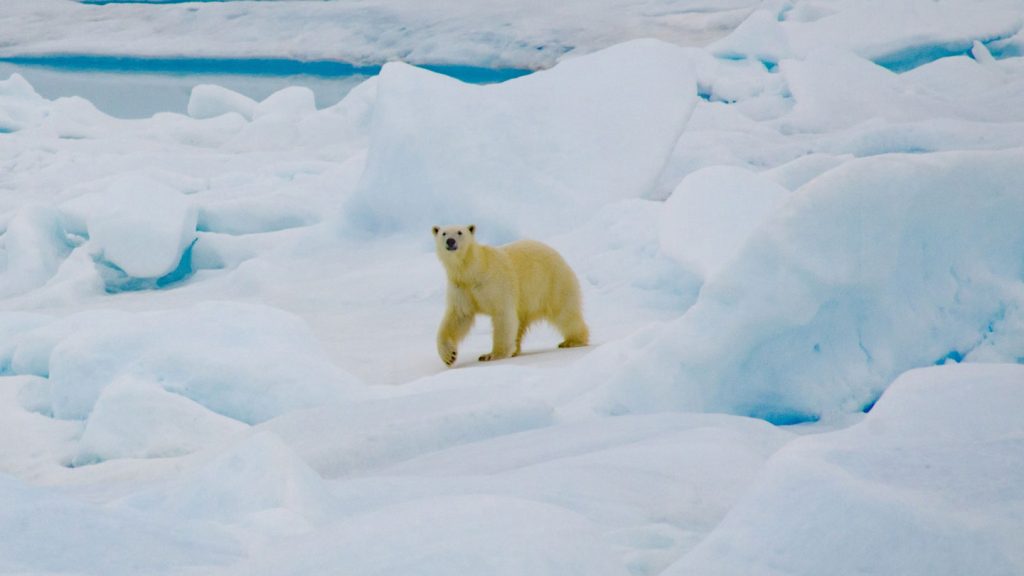Polar bears are facing increasing challenges due to the changing climate, which has led to a loss of their icy habitats. In addition to environmental threats, polar bears are now also facing a rise in exposure to various pathogens. A study conducted by researchers found that polar bears living near Alaska have been more frequently exposed to five different pathogens compared to a few decades ago. This increase in exposure is likely due to the warming climate, which allows these pathogens to persist in environments where they previously could not survive.
The Chukchi Sea polar bear population was selected for the study due to their dramatic losses of sea ice habitat, leading them to spend more time on land in the summertime where they may be exposed to humans and their garbage. The researchers screened blood serum and fecal samples from 232 Chukchi bears collected between 2008 and 2017 for antibodies against various bacteria, viruses, and parasites. The results showed an increase in exposure to parasitic and bacterial pathogens among the bears since the 1990s, indicating a potential rise in disease prevalence within the population.
The study also found that individual bears had varying diets based on the chemical markers found in their hair, which were linked to their exposure to pathogens. The researchers suggest that the increase in pathogen exposure may be related to changes in the bears’ food chain, highlighting the interconnectedness of ecosystem health. The findings also raised concerns about the potential transmission of these pathogens to humans and the need for further research to evaluate the risks of infection.
While the results provide valuable insights into the impact of climate change on polar bear health, some experts are cautious about drawing definitive conclusions from the study. The geographic variations within the polar bear population could introduce biases in the data analysis. However, the broader implications of the movement of pathogens in the Arctic ecosystem highlight the importance of understanding the interactions between wildlife, pathogens, and human health. Overall, the study underscores the complex challenges faced by polar bears in a rapidly changing environment and the need for continued research to protect these iconic animals and their habitats.
The study’s findings also shed light on the broader implications of pathogens in the Arctic ecosystem, where changes in the food chain can impact multiple species, including humans. With key prey species like ringed seals experiencing disease outbreaks, there is a growing need to monitor and analyze pathogen dynamics in the region. The study’s results raise questions about the potential risks of zoonotic diseases, highlighting the importance of ecosystem health and the interconnectedness of wildlife, pathogens, and human populations. Overall, the study highlights the urgent need for further research to understand and address the complex challenges faced by polar bears and other Arctic species in a changing world.


